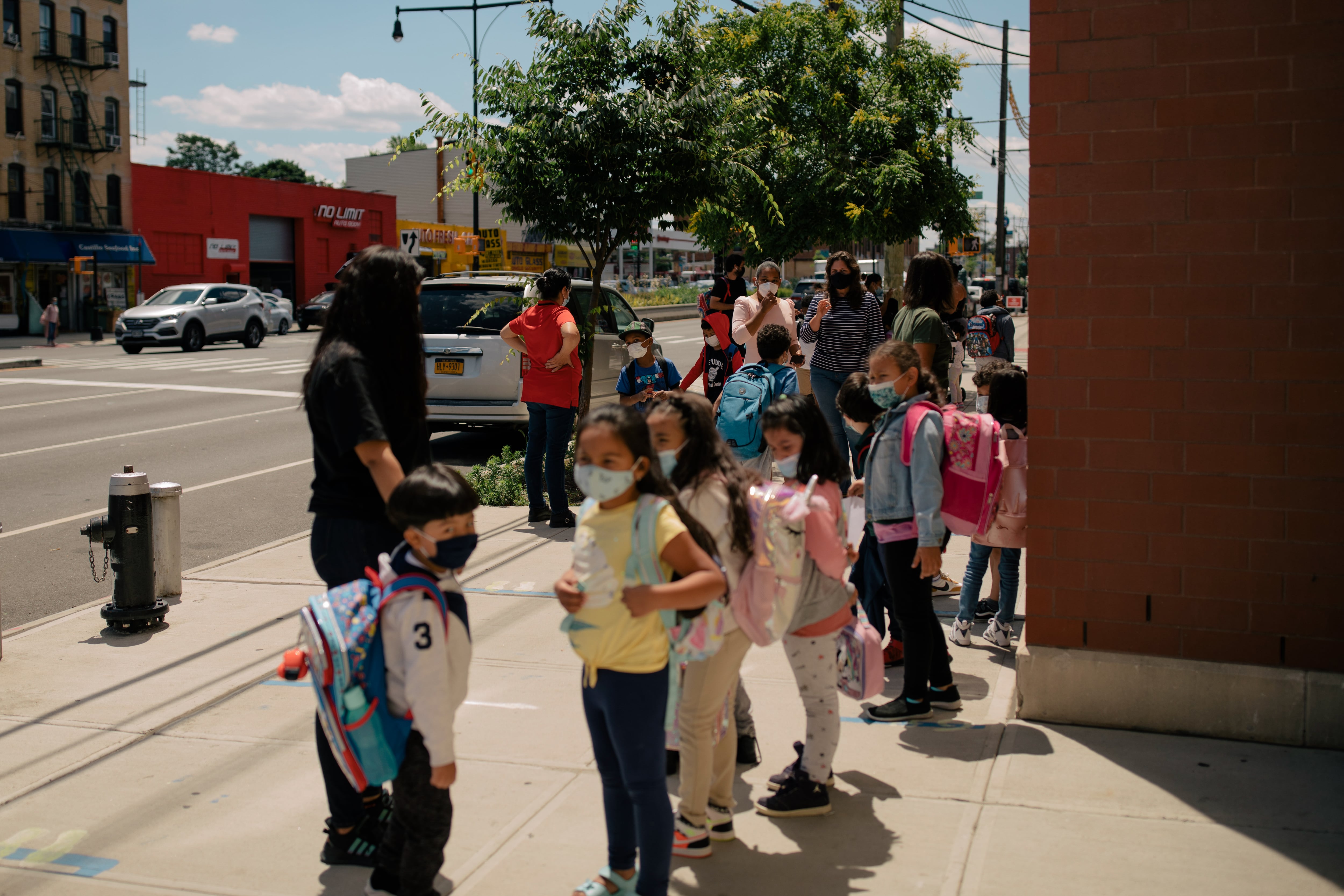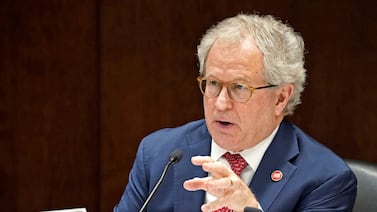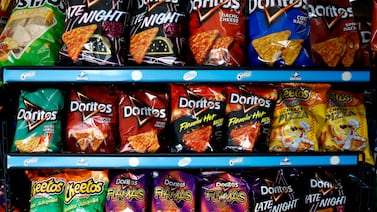New York City schools will stick with universal masking for now, despite new federal guidance that OKs ditching face coverings for vaccinated students and teachers, Mayor Bill de Blasio said Monday.
Under new guidance released last week, the Centers for Disease Control and Prevention no longer recommends that staff and students who are vaccinated wear masks inside of schools.
The guidance also continues to recommend maintaining at least three feet of distance between people inside of buildings. However, social distancing should not get in the way of fully reopening buildings to every student, the agency said. If students and staff cannot be distanced, schools should take additional precautions, such as indoor masking.
Mayor Bill de Blasio indicated that masking could go away in the fall, but for now schools will stick with face coverings.
“I’m absolutely confident based on this guidance and everything else we’ve seen that we’ll be able to get all our kids back into school in September, but for now [we’re] sticking with the idea that, you know, wearing the masks is a smart thing to do in schools,” de Blasio told reporters. “We’ll keep assessing as we go along, but I think for now it still makes sense.”
Dave Chokshi, the city’s health commissioner, said the city is still reviewing the federal guidance and would be “coming out with additional information for parents and students in the weeks ahead.”
He also said: “What I will say is that the CDC guidance mirrors the layered approach to prevention of COVID-19 that has worked in our schools thus far. And the key in that layered approach is to use all the tools that we have in our toolbox.”
That layered approach this past year also included a focus on ventilation, health screeners or temperature checks before students entered buildings and COVID testing of students and staff.
Principals are eagerly awaiting whether schools will get rid of social distancing since that will determine many staffing needs. If social distancing requirements remain, department officials have said that roughly 10% of schools may need to find space elsewhere for students — such as auditoriums, gyms, or even in centers run by community organizations — in order to fit everyone.
So far, 10% of children ages 0-17 in New York City are fully vaccinated, according to city health data. Children under the age of 12 are still not authorized to receive coronavirus vaccines. However, vaccinations may become available for children as young as 6 months old by the fall, which could factor into how schools approach protective measures for coronavirus.
The city’s coronavirus positivity rate has been on a slight rise since at least the end of June, when it was about 0.6%. The positivity rate was an average 1.27% over the past seven days, de Blasio said Monday.
Correction: A previous version of this story said 10% of children ages 12-17 are fully vaccinated. In fact, that percentage is for all children ages 17 and younger.





